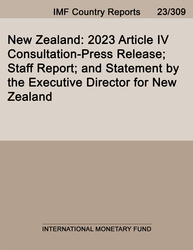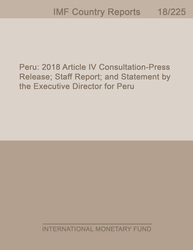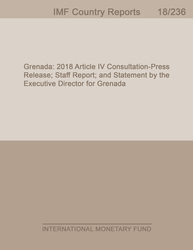
New Zealand: 2023 Article IV Consultation-Press Release; Staff Report; and Statement by the Executive Director for New Zealand
New Zealand: 2023 Article IV Consultation-Press Release; Staff Report; and Statement by the Executive Director for New Zealand
READ MORE...
Volume/Issue:
Volume 2023
Issue 309
Publication date: August 2023
ISBN: 9798400251986
$20.00
Add to Cart by clicking price of the language and format you'd like to purchase
Available Languages and Formats
| English |
Prices in red indicate formats that are not yet available but are forthcoming.
Topics covered in this book
This title contains information about the following subjects.
Click on a subject if you would like to see other titles with the same subjects.
Inflation , Money and Monetary Policy , International - Economics , Environmental Economics , stats NZ , money market rate , monetary policy mix , authorities project real GDP growth , labor market tightness , CPI data , policy agenda , Inflation , Housing prices , Housing , Monetary tightening , Climate change , Global , Pacific Islands
Also of interest
Summary
The 2023 Article IV Consultation discusses that New Zealand’s economy is in the midst of a necessary, policy-induced slowdown following the strong post-pandemic recovery. With exemplary management of the pandemic, New Zealand recovered faster than most other advanced economies. The economy is expected to continue on its slow growth as monetary tightening takes hold. The bulk of the impact of the rate hikes will be felt in 2023 and 2024 given the usual lags in transmission. Risks to the outlook stem from the external environment and a potential need for stronger tightening of monetary and financial conditions. Global developments relating to growth, deepening geo-economic fragmentation, and financial stability shocks can significantly alter the baseline assumptions for New Zealand. The economy is likely to continue its slow growth in the near term as monetary tightening continues to take hold. Inflation will likely decline but remain above target in 2024, with new discretionary spending adding to pressures. Risks stem mainly from policy missteps, housing market developments, and global spillovers.
Copyright © 2010 - 2025
Powered by:
AIDC



